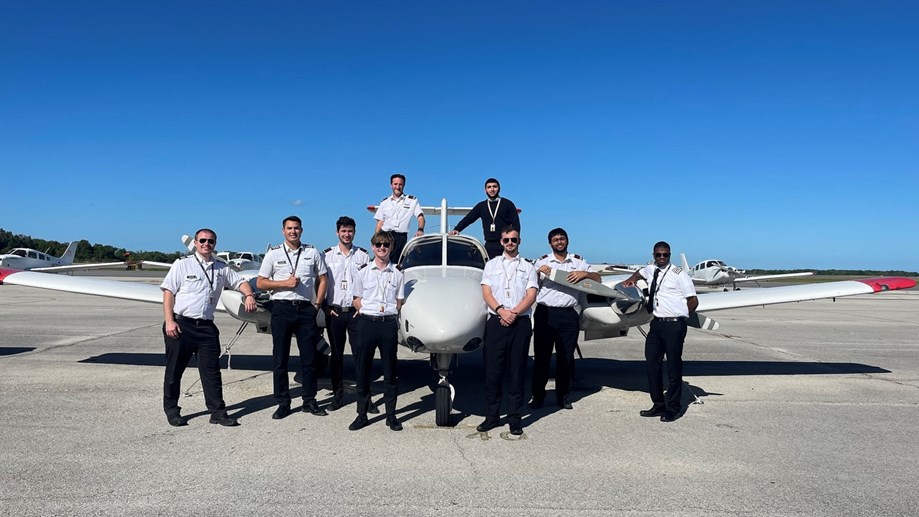Flight School for Student Pilots
Flying has long been one of humanity’s greatest aspirations. For those passionate about aviation, becoming a pilot is a dream come true. However, this dream requires dedication, education, and rigorous training. Flight schools are the foundational institutions where aspiring pilots transform their dreams into reality. This guide will explore everything you need to know about flight schools, the journey of a student pilot, and what it takes to earn your wings.
Understanding Flight Schools
Flight schools come in various types and sizes, ranging from small local operations to large university programs. Regardless of the size, they all aim to provide the knowledge and skills necessary to become a competent pilot. Here’s an overview of the types of flight schools:
- Part 61 Flight Schools: These are typically smaller, more flexible schools that cater to students who may be working or studying part-time. They offer a less structured training schedule and allow students to progress at their own pace.
- Part 141 Flight Schools: These schools are more structured and are often affiliated with larger educational institutions. They follow a stricter curriculum and are ideal for students who prefer a more regimented approach to learning.
- University-Based Flight Schools: Many universities offer degree programs in aviation, combining academic coursework with flight training. These programs are comprehensive, often including aspects of aviation management and engineering.
Choosing the Right Flight School
Selecting the right flight school is crucial for your success. Here are some factors to consider:
- Accreditation and Certification: Ensure the school is accredited and has the necessary FAA certifications (Part 61 or Part 141).
- Fleet and Facilities: Inspect the quality and variety of aircraft available for training. Modern, well-maintained aircraft are essential for safe and effective learning.
- Instructors: Experienced, qualified instructors make a significant difference. Look for schools with instructors who have extensive flying and teaching experience.
- Cost: Flight training can be expensive. Compare costs between schools and consider financial aid or scholarships that may be available.
- Reputation: Research the school’s reputation. Read reviews, speak with former students, and check their safety records.
The Journey of a Student Pilot
Becoming a pilot is a step-by-step process, beginning with obtaining a student pilot certificate and culminating in earning a commercial pilot license. Here’s a breakdown of the typical pathway:
- Student Pilot Certificate: The first step is obtaining a student pilot certificate from the FAA. You must be at least 16 years old and pass a medical exam by an FAA-authorized aviation medical examiner.
- Ground School: Ground school covers the theoretical aspects of flying, including aerodynamics, navigation, weather, regulations, and aircraft systems. This can be completed online or in a classroom setting.
- Flight Training: Hands-on training begins with dual instruction flights, where you’ll learn basic maneuvers, takeoffs, and landings with an instructor. As you progress, you’ll undertake solo flights to build experience and confidence.
- Private Pilot License (PPL): To obtain a PPL, you need at least 40 hours of flight time, including 20 hours with an instructor and 10 hours of solo flight. You’ll also need to pass a written exam and a checkride, which is a practical test with an FAA examiner.
- Instrument Rating (IR): An instrument rating allows you to fly in a wider range of weather conditions by relying on instruments for navigation and control. This requires additional training and a separate written and practical test.
- Commercial Pilot License (CPL): To become a commercial pilot, you need to accumulate more flight hours (typically 250 hours) and complete advanced training. This license allows you to be paid for your flying services.
- Additional Ratings and Endorsements: Depending on your career goals, you might pursue additional ratings, such as multi-engine, flight instructor, or airline transport pilot (ATP) ratings.
The Challenges and Rewards
Flight training is rigorous and demanding, both mentally and physically. Students must master complex concepts, hone their flying skills, and remain calm under pressure. Here are some common challenges faced by student pilots:
- Time Management: Balancing flight training with other responsibilities can be challenging. Developing good time management skills is essential.
- Financial Pressure: The cost of flight training can be a significant burden. Students need to plan their finances carefully and explore funding options.
- Weather Dependency: Flight training is highly dependent on weather conditions. Inclement weather can delay training schedules and require flexibility.
- Physical and Mental Demands: Flying requires good health and mental acuity. Students must maintain their physical fitness and manage stress effectively.
Despite these challenges, the rewards of becoming a pilot are immense. Pilots enjoy a sense of freedom, the thrill of flight, and the opportunity to see the world from a unique perspective. Additionally, a career in aviation can be financially rewarding and offers numerous opportunities for advancement.
Tips for Success
To succeed in flight school and beyond, consider the following tips:
- Stay Committed: Dedication and persistence are key. Flight training can be demanding, but staying committed to your goals will help you overcome obstacles.
- Build a Support Network: Surround yourself with supportive family, friends, and fellow students. Having a support network can provide motivation and encouragement.
- Practice Regularly: Consistency is crucial in flight training. Regular practice helps reinforce skills and build confidence.
- Stay Informed: Aviation is a constantly evolving field. Stay updated with the latest developments, regulations, and technologies.
- Take Care of Your Health: Physical and mental health are vital for pilots. Maintain a healthy lifestyle, get regular exercise, and manage stress effectively.
- Learn from Mistakes: Every pilot makes mistakes. The key is to learn from them and improve. Embrace feedback from instructors and continuously strive to enhance your skills.
Career Opportunities
Upon completing flight training, numerous career opportunities await. Here are some potential career paths for pilots:
- Airline Pilot: Flying for commercial airlines is one of the most common career paths. It offers good pay, benefits, and the chance to travel extensively.
- Corporate Pilot: Corporate pilots fly private jets for businesses and high-net-worth individuals. This role often offers more flexibility and varied flying experiences.
- Flight Instructor: Many pilots start their careers as flight instructors. It’s a great way to build hours and gain experience while helping others achieve their flying dreams.
- Cargo Pilot: Flying cargo planes involves transporting goods rather than passengers. It’s a vital part of the global supply chain and can offer unique flying challenges.
- Charter Pilot: Charter pilots operate on-demand flights, offering services to individuals, businesses, and organizations. This role can be diverse and exciting.
- Military Pilot: For those who qualify, becoming a military pilot offers the chance to fly advanced aircraft and serve their country. Military training is rigorous but highly rewarding.
- Agricultural Pilot: Also known as crop dusters, agricultural pilots fly over farms to apply fertilizers and pesticides. It’s a specialized and important role in the agricultural industry.
- Emergency Medical Services (EMS) Pilot: EMS pilots fly helicopters or planes to transport patients, organs, and medical supplies. It’s a challenging but fulfilling career.
Conclusion
Flight school is the gateway to a thrilling and rewarding career in aviation. It requires dedication, hard work, and a passion for flying. By choosing the right flight school, committing to your training, and overcoming challenges, you can achieve your dream of becoming a pilot. The sky is not the limit; it’s just the beginning. So, buckle up, take to the skies, and embark on an adventure that few have the privilege to experience. Happy flying!

